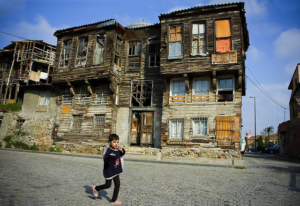3D Printing Homes: the Future of Housing?
 An important part of fighting global poverty is providing people a safe place to live. 3D printed homes offers a new solution, as this new method allows for fast and cheap mass-production of affordable housing.
An important part of fighting global poverty is providing people a safe place to live. 3D printed homes offers a new solution, as this new method allows for fast and cheap mass-production of affordable housing.
What is the Current Demand for Affordable Housing?
Before the pandemic, approximately 2% of the world’s population was classified as homeless. In addition, over 20% of the world’s population lacked adequate housing. Demographic trends point to an acceleration in population growth worldwide, coupled with the decline of average household size, the global need for affordable housing is increasing rapidly.
The UN estimates—with ‘medium growth’—the world’s population will reach over 11 billion people by the end of this century. Furthermore, environmental instances have displaced millions of people around the world, make it harder to live in some places. The need for affordable housing is clear, however, new 3D printing homes could be the answer to producing quality affordable housing around the world.
What does 3D Printed Housing Offer?
Compared to traditional housing methods, 3D printing is faster and cheaper. Moreover, 3D printing offers environmental benefits. By limiting construction and waste the method is carbon neutral or even negative. With millions of people living in poorly constructed homes made with scrap metal and dirt floors, 3D printed homes promise a safer and better-quality living environment. Living in slum housing can not only make it harder to succeed in school or at work, but the dangerous living conditions can present physical health risks.
3D printed homes are made to last. 3D printing creates a hybrid concrete mortar that hardens while printing. As a result, the tool can mass-produce ‘housing kits’ with the structures needed to build a home.
Current 3D Printing Examples
In the city of Chennai, India, the country is seeing its first 3D printed homes thanks to NGO Tvasta. “Traditional construction is tedious and time-consuming. People are increasingly getting left out as affordability is limited, or settling for low-quality homes,” said Adithya Jain, the company’s CEO. They built the first house in five days. Additionally, they used 30% less of the budget than planned and produced less environmental waste in the process.
In El Salvador, an American company ICON has successfully replaced slums with 3D-printed housing. They have designed a 350-square foot home which was assembled in approximately two days. “Something that sounds like science fiction is real… This is meant to be long-term sustainable housing,” said Jason Ballard the co-founder of ICON.
3D Printing’s Promising Future
As the demand for affordable housing continues to increase, there will be a need to invest in technology that allows us to keep up with the demand, giving everyone the opportunity to live in safe and quality housing. 3D printed homes have the potential to help end global poverty and the worldwide housing crisis.
– Alex Muckenfuss
Photo: Flickr
